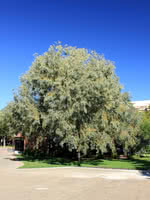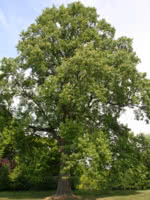Mon-Fri 9am - 5pm Mountain time
Golden Willow vs Tulip Poplar
Salix alba vitellina
Liriodendron tulipifera
NOT AVAILABLE THIS SEASON - MIGHT RETURN
Golden Willow is an attractive accent tree that's perfectly suited for those moist or wet areas on your property.
This fast growing tree has glossy narrow leaves that turn gold in fall, furrowed brown bark and showy gold branches that especially stand out in the winter.
Golden Willow is commonly used for windbreaks, shelterbelts, and ornamental planting. In addition to looking great, Golden Willow attracts a variety of birds and mammals with its twigs and buds.
All willow are important to native pollinators each spring as they have higher amounts of pollen and nectar early each growing season when other food sources are scarce.
Note: do not plant near buildings or buried services.
Tulip Poplar is the perfect shade tree for wide open spaces. It has a shallow and extensive root system, so ensure you give it space to grow. The attractive and showy, yellow-orange, tulip shaped flowers are where this tree gets its name.
Tulip Poplar is somewhat rare in Canada but highly sought after as it is difficult to grow. Does best in a moist, well-drained soil.
Golden Willow Quick Facts
Tulip Poplar Quick Facts
In row spacing: 2.4 - 3 m (8 - 10 ft)

